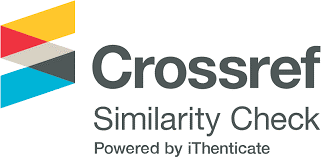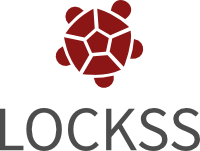Zero Sequence Injection in Delta-CHB STATCOM: Towards Optimum Silicon Area Through Typical Power IGBT/diode Model
DOI:
https://doi.org/10.18618/REP.e202437Keywords:
Delta-CHB, STATCOM, third harmonic, silicon areaAbstract
This work quantifies the impact of third harmonic circulating current injection (THCCI) in a Cascaded H-bridge converter in delta configuration (Delta-CHB) for Static Synchronous Compensator (STATCOM) application. The analyses consist of evaluating the impact of THCCI on the silicon area of semiconductor devices. To achieve this objective, this work develops a typical IGBT/Diode model to determine the nominal current of the devices for a given maximum junction temperature. Commercial devices in the voltage classes of 1700 V, 3300 V, 4500 V, and 6500 V were considered, with nominal currents ranging from 150 A to 3600 A. A hybrid approach based on physical-oriented scaling laws and black-box modeling allows to reach a coefficient of determination higher than 79\% for all modeled variables. The results showed an increase of 43.8\% in the active area of the IGBT and 30.87\% in the active area of the diode when the peak cluster current increased by 62\% due to THCCI.
Downloads
References
ABB, Static compensator (STATCOM), URL: https://new.abb.com/facts/statcom.
Siemens, Optimal dynamic grid stabilization, URL: https://www.siemens-energy.com/global/en/offerings/power-transmission/portfolio/flexible-ac-transmission-systems/svcplus.html.
GE, Static Synchronous Compensator (STATCOM) Solutions, URL: https://www.gegridsolutions.com/products/brochures/powerd vtf/STATCOM GEA31986 HR.pdf.
M. Hagiwara, R. Maeda, H. Akagi, “Negative-Sequence ReactivePower Control by a PWM STATCOM Based on a Modular Multilevel Cascade Converter (MMCC-SDBC)”, IEEE Transactions on Industry Applications, vol. 48, no. 2, pp. 720–729, March-April 2012.
O. Oghorada, L. Zhang, “Analysis of star and delta connected modular multilevel cascaded converter-based STATCOM for load unbalanced compensation”, International Journal of Electrical Power & Energy Systems, vol. 95, pp. 341–352, February 2018.
D. d. C. Mendonc¸a, J. M. S. Callegari, A. F. Cupertino, H. A. Pereira, S. I. Seleme Junior, “Delta-CHB Statcom with Reduced Capacitance Through Third Harmonic Injection”, Eletronica de Potência,no. 2, p. 151–162, May 2023.
T. Friedli, J. W. Kolar, “A Semiconductor Area Based Assessment of AC Motor Drive Converter Topologies”, in 2009 Twenty-Fourth Annual IEEE Applied Power Electronics Conference and Exposition, pp. 336–342, February 2009.
J. E. Huber, J. W. Kolar, “Optimum Number of Cascaded Cells for High-Power Medium-Voltage AC–DC Converters”, IEEE Journal of Emerging Selected Topics in Power Electronics, vol. 5, no. 1, pp. 213–232, March 2017.
D. Do Carmo Mendonc¸a, J. V. G. Franca, H. A. Pereira, S. I. S. Junior, A. F. Cupertino, “Third Harmonic Circulating Current Injection Effects on Optimum Silicon Area of Delta-CHB STATCOM”, in 2023 IEEE 8th Southern Power Electronics Conference and 17th Brazilian Power Electronics Conference (SPEC/COBEP), pp. 1–8, November, 2023.
D. do Carmo Mendonça, A. Fagner Cupertino, H. Augusto Pereira, S. Isaac Seleme Júnior, and R. Teodorescu, “Estratégia De Tolerância A Falhas Para Um Conversor Delta-Chb Statcom Na Região De Sobremodulacão”, Eletrônica de Potência, vol. 25, no. 4, pp. 395–404, Dec. 2020.
J. V. G. França, “Development of a Didactic Platform for Flexible Power Electronic Converters”, Eletrônica de Potência, vol. 27, no. 3, pp. 225–235, Aug. 2022.
F. Beltrame, F. H. Dupont, H. C. Sartori, E. C. Cancian, L. Roggia, J. R. Pinheiro, “Design of Boost Converter Based on Optimum Weighted Average Efficiency for Photovoltaic Systems”, Eletrônica de Potência, vol. 19, no. 3, p. 295–302, August 2014.
P. Roberto Matias Junior, J. V. Matos Farias, A. Fagner Cupertino, G. Alves Mendonça, M. Martins Stopa, and H. Augusto Pereira, “Seleção Da Tensão De Bloqueio Ótima De Igbts Para Inversores De Frequência Baseados Em Conversor Modular Multinível”, Eletrônica de Potência, vol. 25, no. 4, pp. 405–414, Dec. 2020.
B. J. Baliga, The IGBT Device, Elsevier, 2015.
K. Ma, A. S. Bahman, S. Beczkowski, F. Blaabjerg, “Complete Loss and Thermal Model of Power Semiconductors Including Device Rating Information”, IEEE Transactions on Power Electronics, vol. 30, no. 5, pp. 2556–2569, May 2015.
A. Marzoughi, R. Burgos, D. Boroyevich, Y. Xue, “Design and Comparison of Cascaded H-Bridge, Modular Multilevel Converter, and 5-L Active Neutral Point Clamped Topologies for Motor Drive Applications”, IEEE Transactions on Industry Applications, vol. 54, no. 2, pp. 1404–1413, March-April 2018.
M. Schweizer, I. Lizama, T. Friedli, J. W. Kolar, “Comparison of the chip area usage of 2-level and 3-level voltage source converter topologies”, in IECON 2010 - 36th Annual Conference on IEEE Industrial Electronics Society, pp. 391–396, November 2010.
H. Energy, Insulated Gate Bipolar Transistor (IGBT) and diode modules with SPT, SPT+, SPT++ and TSPT+ chips, URL: https://www.hitachienergy.com/products-and-solutions/semiconductors/insulated-gate-bipolar-transistor-igbt-and-diode-modules.
H. Energy, Insulated-gate bipolar transistors (IGBT) and diode dies, URL: https://www.hitachienergy.com/products-and-solutions/semiconductors/insulated-gate-bipolar-transistors-igbt-and-diodedies.
Downloads
Published
How to Cite
Issue
Section
License
Copyright (c) 2024 Dayane do Carmo Mendonça, João Victor Guimarães França, Heverton Augusto Pereira, Seleme Isaac Seleme Júnior, Allan Fagner Cupertino

This work is licensed under a Creative Commons Attribution 4.0 International License.















